| March 1, 2006
A New Use for SACD
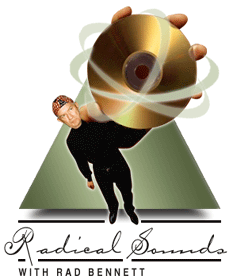 Shortly after I began collecting
stereo LPs, Vox started issuing its series of Vox Boxes. Among these collections of
different composers’ complete works in various genres was J.S. Bach’s complete
organ music, played by Walter Kraft. This took six Vox Boxes, a total of 18 LPs. It looked
very significant on the shelf, displacing about 5" of horizontal storage space --
and, of course, over 12" vertical. Shortly after I began collecting
stereo LPs, Vox started issuing its series of Vox Boxes. Among these collections of
different composers’ complete works in various genres was J.S. Bach’s complete
organ music, played by Walter Kraft. This took six Vox Boxes, a total of 18 LPs. It looked
very significant on the shelf, displacing about 5" of horizontal storage space --
and, of course, over 12" vertical.
About eight years ago, I completed a collection of the
complete Bach organ works on Nimbus CDs. Kevin Bowyer was the talented soloist, and the
series comprised 18 CDs with an average length of 65 minutes. Though the storage height
diminished to a little over 5", the width remained about the same. A 17-CD set played
by Peter Hurford came in at a width of only 5.5" due to the packaging.
Now, at the beginning of 2006, I have a complete set of
Bach’s organ works on the audiophile label BIS, performed by the energetic Hans
Fagius: five discs in a box just over 5" high and slightly over 1" wide. How is
this possible? Restricted dynamic range? Abridged versions? Not at all. These excellent
readings sound better than any of the ones that have come before, including BIS’s own
original CD releases. They have extraordinary frequency and dynamic range and unparalleled
clarity. Why? Because they are PCM tracks transferred to DSD and issued in the
high-resolution SACD format.
That’s right -- these five stereo discs make use of a
property of the SACD format hitherto ignored. By eliminating the CD and multichannel
layers, BIS has been able to create stereo SACDs with playing times of more than four
hours per side. One disc has a whopping 98 chapter stops.
To sweeten the deal even more, BIS offers the five discs
for the price of two. Unable to find the set in the US, I was able to order one from the
UK for about $40, including shipping, from Castle Classics, but you can probably find
other sources. To be sure, these discs will play only on SACD players. But
considering the content and the low cost, they provide good incentive to investigate the
purchase of a universal player.
But as much as I enjoyed this set, the more I played it,
the angrier I grew. Why hadn’t Sony taken advantage of SACD’s longer playing
time in the first place? Why are we just now being given an example of its use? Until I
discovered this BIS set, there seemed no justification for making an "SACD only"
disc. SACD/CD hybrids have made more sense, as discs that a buyer can play on his CD
player until he purchases an SACD or universal unit. This set has changed my opinion.
When Sony released the first SACDs, most were not hybrid
SACD/CDs, and they often had playing times of less than 45 minutes -- mere LP-length
editions of classic performances at high prices. What would have happened if Sony, instead
of putting Bruno Walter’s recording of Brahms’ Fourth Symphony out on a single
disc, had issued Walter’s complete Brahms cycle, plus the overtures and the Haydn
Variations, on a single stereo SACD? Might not that have been greater incentive for the
public to purchase SACD machines and receive top value for their dollars? One can only
speculate that greed must have been Sony’s motive; this historic material has already
paid for itself many times over in its original and reissue packages.
I hope others will take up BIS’s example. Unless one
of the new blue-laser systems takes off faster than I think it will, it might just be the
shot in the arm that SACD needs. While continuing to produce new and historic recordings
that take full advantage of SACD’s multichannel capabilities (the vaults still
contain hundreds of original multichannel masters from the quadraphonic era), archival
series could be created that would use this newly recognized storage capacity for
recordings that were released only in a two-channel format. Think of these:
Bernstein’s CBS Mahler on three or four stereo SACDs, Bruno Walter’s Beethoven
symphonies on two, Solti’s Ring on four, Szell’s Schumann Symphonies on
one -- easy to store, affordable, and all sounding better than ever.
That’s no doubt a utopian dream of the distant future;
here are some great new recordings to get you through the cold of this winter:
Biber: Missa Christi Resurgentis
English Concert, English Concert Chorus; Andrew Manze, conductor.
Harmonia Mundi HMU 807397, Hybrid Multichannel SACD.
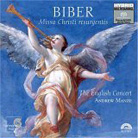 When I was in college, many years ago,
Heinrich Ignaz Franz Biber was taught as a Baroque renegade, a visionary who wouldn’t
pass up the use of any special effect to get his point across. The composition thrown us
was Battalia, in which Biber convincingly portrays a battle by resorting to such
effects as having the double-bass player insert sheets of paper between his strings so
that the resultant rattle conjures the sound of martial drums. Research has since
unearthed works that show us that though Biber had an ear for graphic effects, he could
use them to create music that would be welcome alongside that of any other composer. In
the magnificent Missa Christi Resurgentis, Biber uses instrumental passages and
accompaniments to vividly underline the text. "Descended from Heaven," for
instance, is set to a repeated descending melody. When I was in college, many years ago,
Heinrich Ignaz Franz Biber was taught as a Baroque renegade, a visionary who wouldn’t
pass up the use of any special effect to get his point across. The composition thrown us
was Battalia, in which Biber convincingly portrays a battle by resorting to such
effects as having the double-bass player insert sheets of paper between his strings so
that the resultant rattle conjures the sound of martial drums. Research has since
unearthed works that show us that though Biber had an ear for graphic effects, he could
use them to create music that would be welcome alongside that of any other composer. In
the magnificent Missa Christi Resurgentis, Biber uses instrumental passages and
accompaniments to vividly underline the text. "Descended from Heaven," for
instance, is set to a repeated descending melody.
Andrew Manze and his musicians have delighted me with every
new release. His performances of Mozart, Bach, Handel, and now Biber, have energy, Úlan,
precision, and soul. He gets the best out of all his musicians, and Harmonia Mundi’s
engineers record his English Concert with insight and imagination. Much of Biber’s
music is antiphonal, and the rear channels are used to make the most of call-and-response
effects by placing various musicians to the sides and rear of the listening area. The
clarity is impressive, as is the full but perfectly articulated and defined bass line.
When trumpets, trombones, and full chorus join the strings and continuo, the result is a
grand sound, and a textbook case for saving the SACD format so that we can experience
works like this in high-resolution multichannel sound.
Ladysmith Black Mambazo: Long Walk to Freedom
With: Lucky Dube, Melissa Etheridge, Emmylou Harris, Bhekumuzi Luthuli, Taj Mahal, Yusi
Mahlasela, Hugh Masekela, Joe McBride, Sarah McLachlan, Natalie Merchant, Nokukhanya
Phuzekhemisi, Thandiswa, Zap Mama.
Heads Up HUSA 9109, Hybrid Multichannel SACD.
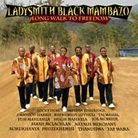 It’s been 20 years since Paul Simon
introduced this a cappella group to Western ears in his landmark recording, Graceland.
The eight-man ensemble has continued to thrive, receiving international respect and
admiration. It has also attracted some of music’s brightest lights into
collaboration. Here, Ladysmith Black Mambazo comes across as letter-perfect as on any
recent recording. Their pitch and precision are impeccable. Add to that immaculate
diction, a feeling for rhythm that seems to be in each singer’s bones, and a rich,
homogenized tonality, and you have one heck of a performing machine. Nor does it ever
sound mechanical, or merely perfect for perfection’s sake. With Ladysmith, music is
always the name of the game. The guest artists fit in well. Emmylou Harris is especially
effective in a medley of "Amazing Grace" and "Nearer My God to Thee,"
in an arrangement that is a joyous meeting of cultures. It’s been 20 years since Paul Simon
introduced this a cappella group to Western ears in his landmark recording, Graceland.
The eight-man ensemble has continued to thrive, receiving international respect and
admiration. It has also attracted some of music’s brightest lights into
collaboration. Here, Ladysmith Black Mambazo comes across as letter-perfect as on any
recent recording. Their pitch and precision are impeccable. Add to that immaculate
diction, a feeling for rhythm that seems to be in each singer’s bones, and a rich,
homogenized tonality, and you have one heck of a performing machine. Nor does it ever
sound mechanical, or merely perfect for perfection’s sake. With Ladysmith, music is
always the name of the game. The guest artists fit in well. Emmylou Harris is especially
effective in a medley of "Amazing Grace" and "Nearer My God to Thee,"
in an arrangement that is a joyous meeting of cultures.
In this warm, whistle-clean recording, the group describes
a circle around the listener, the most important events happening up front. It is one of
the few "listener-immersion" multichannel recordings I have really liked. The
two-channel tracks are good, but this is one recording that was conceived for multichannel
playback and should be heard that way.
Del Tredici: Paul Revere’s Ride
Bernstein: Lamentation
Theofanidis: The Here and Now
Hila Pittmann, soprano; Richard Clement, tenor; Brett Pollegato, baritone; Atlanta
Symphony Orchestra and Chorus; Robert Spano, conductor.
Telarc SACD-50638, Hybrid Multichannel SACD.
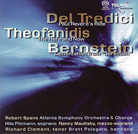 During his tenure as music
director of the Atlanta Symphony, Robert Shaw created the Atlanta Symphony Chorus. A
master of choral sound, Shaw left a choral legacy that few symphony orchestras can boast.
This new SACD spotlights the ASC in three very different American compositions. David Del
Tredici’s Paul Revere’s Ride is set to the famous poem by Henry Wadsworth
Longfellow, but is clearly as much about patriotism and a call to arms to the USA of today
as about the era of the Revolutionary War. The cantata was written in the wake of 9/11,
and though the text and orchestration make it clear that Revere is riding a horse, the
work is also scored for sirens, which jolt the listener into the present. Leonard
Bernstein’s Lamentation, the third movement of his Symphony No.1, is a setting
of Jeremiah’s lament for the city of Jerusalem. Chris Theofanidis’ The Here
and Now is spiritual and mystical, based on poems by Jelaluddin Rumi, a 13th-century
Persian poet. During his tenure as music
director of the Atlanta Symphony, Robert Shaw created the Atlanta Symphony Chorus. A
master of choral sound, Shaw left a choral legacy that few symphony orchestras can boast.
This new SACD spotlights the ASC in three very different American compositions. David Del
Tredici’s Paul Revere’s Ride is set to the famous poem by Henry Wadsworth
Longfellow, but is clearly as much about patriotism and a call to arms to the USA of today
as about the era of the Revolutionary War. The cantata was written in the wake of 9/11,
and though the text and orchestration make it clear that Revere is riding a horse, the
work is also scored for sirens, which jolt the listener into the present. Leonard
Bernstein’s Lamentation, the third movement of his Symphony No.1, is a setting
of Jeremiah’s lament for the city of Jerusalem. Chris Theofanidis’ The Here
and Now is spiritual and mystical, based on poems by Jelaluddin Rumi, a 13th-century
Persian poet.
All of these compositions are lushly scored and feature the
Atlanta Symphony Chorus in passages both sonorous and dramatic. The chorus is huge -- the
list of its members fills two pages -- and produces a rich, glowing sound. But its singers
also enunciate clearly; rapid passages, such as the Del Tredici’s fugal
"war" between "Yankee Doodle" and "Rule, Britannia," are
very clean. The Atlanta Symphony plays like what it is: one of our very best. The sound is
massive and full, with just the right amount of reverberance in the surrounds, but details
come through with singular clarity. These would be perfect forces to record all of Del
Tredici’s large-scale pieces based on Alice in Wonderland.
Altre Follie 1500-1705
Music by Albicastro, Cabanilles, Corbetta, Corelli, Piccinini, Sanz, Vivaldi, others.
Manfredo Kraemer, violin; soloists; Hesperion XXI; Jordi Savall, director.
Alia Vox AVSA 9844, Hybrid Multichannel SACD.
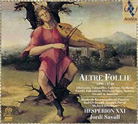 La Folia began life as
a Portuguese peasant dance, but as the various courts of Europe began to assemble groups
of artists and musicians, it was raised into the ranks of the aristocracy as a courtly
dance. Its harmonic base provided the foundation for countless compositions by diverse
composers writing for different groups of instruments. This recording gives the
tune’s history in sound, ranging from anonymous works from around 1500 to
Vivaldi’s more famous "La Follia" sonata of 1705, all in chronological
sequence so that one can follow the evolution of music over 200 years. Jordi Savall is a
master at putting together this sort of program, and the readings are elegant and
spirited. It might be hard to keep from tapping your toe or moving some body part during
many of these performances; after all, they are either actual dances or based on the
original dance tune. The period instruments, both original and reconstructed, offer an
incredibly subtle range of sonorities accurately picked up in this high-resolution
recording. The multichannel tracks sound warm and reverberant, yet with excellent presence
and detail. As usual with Alia Vox, the packaging is worthy of mention; booklet and jacket
contain full-color photographs and art of the highest order. La Folia began life as
a Portuguese peasant dance, but as the various courts of Europe began to assemble groups
of artists and musicians, it was raised into the ranks of the aristocracy as a courtly
dance. Its harmonic base provided the foundation for countless compositions by diverse
composers writing for different groups of instruments. This recording gives the
tune’s history in sound, ranging from anonymous works from around 1500 to
Vivaldi’s more famous "La Follia" sonata of 1705, all in chronological
sequence so that one can follow the evolution of music over 200 years. Jordi Savall is a
master at putting together this sort of program, and the readings are elegant and
spirited. It might be hard to keep from tapping your toe or moving some body part during
many of these performances; after all, they are either actual dances or based on the
original dance tune. The period instruments, both original and reconstructed, offer an
incredibly subtle range of sonorities accurately picked up in this high-resolution
recording. The multichannel tracks sound warm and reverberant, yet with excellent presence
and detail. As usual with Alia Vox, the packaging is worthy of mention; booklet and jacket
contain full-color photographs and art of the highest order.
Hiromi: Spiral
Telarc 63631, Hybrid Multichannel SACD.
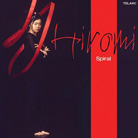 This is Hiromi Uehara’s third
SACD/CD for Telarc. The young Japanese keyboard player, who prefers to go by only her
first name, continues to display virtuoso abilities and very good songwriting skills.
Having dazzled us with her amazing ability on her first sets, the young artist settles in
this time to dwell more on her musical expression. Sure, we are aware that she can
apparently play the spots off a leopard, but she uses her considerable skills to achieve
musical results. Her style has been described as jazz meets funk meets Beethoven meets
just about anything else. The feeling I get is one of neo-Impressionism. Her compositions
contain great swatches of color, and she weaves in and out of these with great agility,
producing some beautiful sounds along the way. The keyboard-drums-bass instrumentation is
a mix of acoustic and electric, and the high-resolution sound lets you hear every nuance
of the arrangements. The instruments sound natural; the ambience sounds like a space
created especially for the recording, but it is warm, somehow intimate and spacious in the
same instant, and most appealing. The sound occasionally spreads to the surround channels,
but largely stays up front. The bass is solid without becoming overbearing. All told, a
fine engineering job. This is Hiromi Uehara’s third
SACD/CD for Telarc. The young Japanese keyboard player, who prefers to go by only her
first name, continues to display virtuoso abilities and very good songwriting skills.
Having dazzled us with her amazing ability on her first sets, the young artist settles in
this time to dwell more on her musical expression. Sure, we are aware that she can
apparently play the spots off a leopard, but she uses her considerable skills to achieve
musical results. Her style has been described as jazz meets funk meets Beethoven meets
just about anything else. The feeling I get is one of neo-Impressionism. Her compositions
contain great swatches of color, and she weaves in and out of these with great agility,
producing some beautiful sounds along the way. The keyboard-drums-bass instrumentation is
a mix of acoustic and electric, and the high-resolution sound lets you hear every nuance
of the arrangements. The instruments sound natural; the ambience sounds like a space
created especially for the recording, but it is warm, somehow intimate and spacious in the
same instant, and most appealing. The sound occasionally spreads to the surround channels,
but largely stays up front. The bass is solid without becoming overbearing. All told, a
fine engineering job.
Battalia!: Baroque Battle Music for Trumpet Consort
Ribicines; Igino Conforzi, conductor.
Arts 47666, Hybrid Multichannel SACD.
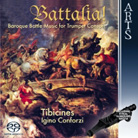 This disc is like no other. Featuring
music by Attaignant, Bedinelli, Fantini, Garsi, Gastoldi, Praetorius, and Susato, it
re-creates the sound of outdoor ceremonial compositions written between 1500 and 1650,
each of which had something to do with the military, war, or battle. The performing
ensemble comprises trumpets, ciaramelli (shawms), trombones, serpent, and percussion; the
vocal soloists and organ in some works keeps the overall sound from being devoted entirely
to bombast. The multichannel mix is masterful, the antiphonal brass choirs spread from
front to back, the drums providing a solid foundation up front. The last track is sure to
become a favorite multichannel demonstration passage. It presents a four-and-a-half-minute
Baroque battle, with fanfares, musket and cannon fire, rattling swords, and shouts
surrounding the listener. It’s very impressive, and presumably authentic -- the
booklet notes that even the weapons are faithful reproductions of originals. The
5.1-channel, high-resolution sound is so realistic that you’d best put out the cat
and dog before playing this track. This disc is like no other. Featuring
music by Attaignant, Bedinelli, Fantini, Garsi, Gastoldi, Praetorius, and Susato, it
re-creates the sound of outdoor ceremonial compositions written between 1500 and 1650,
each of which had something to do with the military, war, or battle. The performing
ensemble comprises trumpets, ciaramelli (shawms), trombones, serpent, and percussion; the
vocal soloists and organ in some works keeps the overall sound from being devoted entirely
to bombast. The multichannel mix is masterful, the antiphonal brass choirs spread from
front to back, the drums providing a solid foundation up front. The last track is sure to
become a favorite multichannel demonstration passage. It presents a four-and-a-half-minute
Baroque battle, with fanfares, musket and cannon fire, rattling swords, and shouts
surrounding the listener. It’s very impressive, and presumably authentic -- the
booklet notes that even the weapons are faithful reproductions of originals. The
5.1-channel, high-resolution sound is so realistic that you’d best put out the cat
and dog before playing this track.
...Rad Bennett
radb@ultraaudio.com

All contents copyright Schneider Publishing Inc., all rights
reserved.
Any reproduction, without permission, is prohibited.
Ultra Audio is part of the SoundStage! Network.
A world of websites and publications for audio, video, music, and movie enthusiasts. |

 Shortly after I began collecting
stereo LPs, Vox started issuing its series of Vox Boxes. Among these collections of
different composers’ complete works in various genres was J.S. Bach’s complete
organ music, played by Walter Kraft. This took six Vox Boxes, a total of 18 LPs. It looked
very significant on the shelf, displacing about 5" of horizontal storage space --
and, of course, over 12" vertical.
Shortly after I began collecting
stereo LPs, Vox started issuing its series of Vox Boxes. Among these collections of
different composers’ complete works in various genres was J.S. Bach’s complete
organ music, played by Walter Kraft. This took six Vox Boxes, a total of 18 LPs. It looked
very significant on the shelf, displacing about 5" of horizontal storage space --
and, of course, over 12" vertical. When I was in college, many years ago,
Heinrich Ignaz Franz Biber was taught as a Baroque renegade, a visionary who wouldn’t
pass up the use of any special effect to get his point across. The composition thrown us
was Battalia, in which Biber convincingly portrays a battle by resorting to such
effects as having the double-bass player insert sheets of paper between his strings so
that the resultant rattle conjures the sound of martial drums. Research has since
unearthed works that show us that though Biber had an ear for graphic effects, he could
use them to create music that would be welcome alongside that of any other composer. In
the magnificent Missa Christi Resurgentis, Biber uses instrumental passages and
accompaniments to vividly underline the text. "Descended from Heaven," for
instance, is set to a repeated descending melody.
When I was in college, many years ago,
Heinrich Ignaz Franz Biber was taught as a Baroque renegade, a visionary who wouldn’t
pass up the use of any special effect to get his point across. The composition thrown us
was Battalia, in which Biber convincingly portrays a battle by resorting to such
effects as having the double-bass player insert sheets of paper between his strings so
that the resultant rattle conjures the sound of martial drums. Research has since
unearthed works that show us that though Biber had an ear for graphic effects, he could
use them to create music that would be welcome alongside that of any other composer. In
the magnificent Missa Christi Resurgentis, Biber uses instrumental passages and
accompaniments to vividly underline the text. "Descended from Heaven," for
instance, is set to a repeated descending melody.  It’s been 20 years since Paul Simon
introduced this a cappella group to Western ears in his landmark recording, Graceland.
The eight-man ensemble has continued to thrive, receiving international respect and
admiration. It has also attracted some of music’s brightest lights into
collaboration. Here, Ladysmith Black Mambazo comes across as letter-perfect as on any
recent recording. Their pitch and precision are impeccable. Add to that immaculate
diction, a feeling for rhythm that seems to be in each singer’s bones, and a rich,
homogenized tonality, and you have one heck of a performing machine. Nor does it ever
sound mechanical, or merely perfect for perfection’s sake. With Ladysmith, music is
always the name of the game. The guest artists fit in well. Emmylou Harris is especially
effective in a medley of "Amazing Grace" and "Nearer My God to Thee,"
in an arrangement that is a joyous meeting of cultures.
It’s been 20 years since Paul Simon
introduced this a cappella group to Western ears in his landmark recording, Graceland.
The eight-man ensemble has continued to thrive, receiving international respect and
admiration. It has also attracted some of music’s brightest lights into
collaboration. Here, Ladysmith Black Mambazo comes across as letter-perfect as on any
recent recording. Their pitch and precision are impeccable. Add to that immaculate
diction, a feeling for rhythm that seems to be in each singer’s bones, and a rich,
homogenized tonality, and you have one heck of a performing machine. Nor does it ever
sound mechanical, or merely perfect for perfection’s sake. With Ladysmith, music is
always the name of the game. The guest artists fit in well. Emmylou Harris is especially
effective in a medley of "Amazing Grace" and "Nearer My God to Thee,"
in an arrangement that is a joyous meeting of cultures. During his tenure as music
director of the Atlanta Symphony, Robert Shaw created the Atlanta Symphony Chorus. A
master of choral sound, Shaw left a choral legacy that few symphony orchestras can boast.
This new SACD spotlights the ASC in three very different American compositions. David Del
Tredici’s Paul Revere’s Ride is set to the famous poem by Henry Wadsworth
Longfellow, but is clearly as much about patriotism and a call to arms to the USA of today
as about the era of the Revolutionary War. The cantata was written in the wake of 9/11,
and though the text and orchestration make it clear that Revere is riding a horse, the
work is also scored for sirens, which jolt the listener into the present. Leonard
Bernstein’s Lamentation, the third movement of his Symphony No.1, is a setting
of Jeremiah’s lament for the city of Jerusalem. Chris Theofanidis’ The Here
and Now is spiritual and mystical, based on poems by Jelaluddin Rumi, a 13th-century
Persian poet.
During his tenure as music
director of the Atlanta Symphony, Robert Shaw created the Atlanta Symphony Chorus. A
master of choral sound, Shaw left a choral legacy that few symphony orchestras can boast.
This new SACD spotlights the ASC in three very different American compositions. David Del
Tredici’s Paul Revere’s Ride is set to the famous poem by Henry Wadsworth
Longfellow, but is clearly as much about patriotism and a call to arms to the USA of today
as about the era of the Revolutionary War. The cantata was written in the wake of 9/11,
and though the text and orchestration make it clear that Revere is riding a horse, the
work is also scored for sirens, which jolt the listener into the present. Leonard
Bernstein’s Lamentation, the third movement of his Symphony No.1, is a setting
of Jeremiah’s lament for the city of Jerusalem. Chris Theofanidis’ The Here
and Now is spiritual and mystical, based on poems by Jelaluddin Rumi, a 13th-century
Persian poet. La Folia began life as
a Portuguese peasant dance, but as the various courts of Europe began to assemble groups
of artists and musicians, it was raised into the ranks of the aristocracy as a courtly
dance. Its harmonic base provided the foundation for countless compositions by diverse
composers writing for different groups of instruments. This recording gives the
tune’s history in sound, ranging from anonymous works from around 1500 to
Vivaldi’s more famous "La Follia" sonata of 1705, all in chronological
sequence so that one can follow the evolution of music over 200 years. Jordi Savall is a
master at putting together this sort of program, and the readings are elegant and
spirited. It might be hard to keep from tapping your toe or moving some body part during
many of these performances; after all, they are either actual dances or based on the
original dance tune. The period instruments, both original and reconstructed, offer an
incredibly subtle range of sonorities accurately picked up in this high-resolution
recording. The multichannel tracks sound warm and reverberant, yet with excellent presence
and detail. As usual with Alia Vox, the packaging is worthy of mention; booklet and jacket
contain full-color photographs and art of the highest order.
La Folia began life as
a Portuguese peasant dance, but as the various courts of Europe began to assemble groups
of artists and musicians, it was raised into the ranks of the aristocracy as a courtly
dance. Its harmonic base provided the foundation for countless compositions by diverse
composers writing for different groups of instruments. This recording gives the
tune’s history in sound, ranging from anonymous works from around 1500 to
Vivaldi’s more famous "La Follia" sonata of 1705, all in chronological
sequence so that one can follow the evolution of music over 200 years. Jordi Savall is a
master at putting together this sort of program, and the readings are elegant and
spirited. It might be hard to keep from tapping your toe or moving some body part during
many of these performances; after all, they are either actual dances or based on the
original dance tune. The period instruments, both original and reconstructed, offer an
incredibly subtle range of sonorities accurately picked up in this high-resolution
recording. The multichannel tracks sound warm and reverberant, yet with excellent presence
and detail. As usual with Alia Vox, the packaging is worthy of mention; booklet and jacket
contain full-color photographs and art of the highest order. This is Hiromi Uehara’s third
SACD/CD for Telarc. The young Japanese keyboard player, who prefers to go by only her
first name, continues to display virtuoso abilities and very good songwriting skills.
Having dazzled us with her amazing ability on her first sets, the young artist settles in
this time to dwell more on her musical expression. Sure, we are aware that she can
apparently play the spots off a leopard, but she uses her considerable skills to achieve
musical results. Her style has been described as jazz meets funk meets Beethoven meets
just about anything else. The feeling I get is one of neo-Impressionism. Her compositions
contain great swatches of color, and she weaves in and out of these with great agility,
producing some beautiful sounds along the way. The keyboard-drums-bass instrumentation is
a mix of acoustic and electric, and the high-resolution sound lets you hear every nuance
of the arrangements. The instruments sound natural; the ambience sounds like a space
created especially for the recording, but it is warm, somehow intimate and spacious in the
same instant, and most appealing. The sound occasionally spreads to the surround channels,
but largely stays up front. The bass is solid without becoming overbearing. All told, a
fine engineering job.
This is Hiromi Uehara’s third
SACD/CD for Telarc. The young Japanese keyboard player, who prefers to go by only her
first name, continues to display virtuoso abilities and very good songwriting skills.
Having dazzled us with her amazing ability on her first sets, the young artist settles in
this time to dwell more on her musical expression. Sure, we are aware that she can
apparently play the spots off a leopard, but she uses her considerable skills to achieve
musical results. Her style has been described as jazz meets funk meets Beethoven meets
just about anything else. The feeling I get is one of neo-Impressionism. Her compositions
contain great swatches of color, and she weaves in and out of these with great agility,
producing some beautiful sounds along the way. The keyboard-drums-bass instrumentation is
a mix of acoustic and electric, and the high-resolution sound lets you hear every nuance
of the arrangements. The instruments sound natural; the ambience sounds like a space
created especially for the recording, but it is warm, somehow intimate and spacious in the
same instant, and most appealing. The sound occasionally spreads to the surround channels,
but largely stays up front. The bass is solid without becoming overbearing. All told, a
fine engineering job. This disc is like no other. Featuring
music by Attaignant, Bedinelli, Fantini, Garsi, Gastoldi, Praetorius, and Susato, it
re-creates the sound of outdoor ceremonial compositions written between 1500 and 1650,
each of which had something to do with the military, war, or battle. The performing
ensemble comprises trumpets, ciaramelli (shawms), trombones, serpent, and percussion; the
vocal soloists and organ in some works keeps the overall sound from being devoted entirely
to bombast. The multichannel mix is masterful, the antiphonal brass choirs spread from
front to back, the drums providing a solid foundation up front. The last track is sure to
become a favorite multichannel demonstration passage. It presents a four-and-a-half-minute
Baroque battle, with fanfares, musket and cannon fire, rattling swords, and shouts
surrounding the listener. It’s very impressive, and presumably authentic -- the
booklet notes that even the weapons are faithful reproductions of originals. The
5.1-channel, high-resolution sound is so realistic that you’d best put out the cat
and dog before playing this track.
This disc is like no other. Featuring
music by Attaignant, Bedinelli, Fantini, Garsi, Gastoldi, Praetorius, and Susato, it
re-creates the sound of outdoor ceremonial compositions written between 1500 and 1650,
each of which had something to do with the military, war, or battle. The performing
ensemble comprises trumpets, ciaramelli (shawms), trombones, serpent, and percussion; the
vocal soloists and organ in some works keeps the overall sound from being devoted entirely
to bombast. The multichannel mix is masterful, the antiphonal brass choirs spread from
front to back, the drums providing a solid foundation up front. The last track is sure to
become a favorite multichannel demonstration passage. It presents a four-and-a-half-minute
Baroque battle, with fanfares, musket and cannon fire, rattling swords, and shouts
surrounding the listener. It’s very impressive, and presumably authentic -- the
booklet notes that even the weapons are faithful reproductions of originals. The
5.1-channel, high-resolution sound is so realistic that you’d best put out the cat
and dog before playing this track.